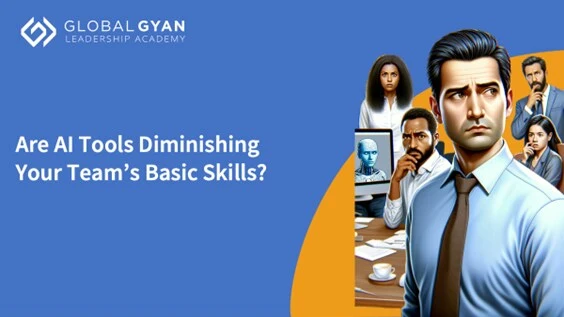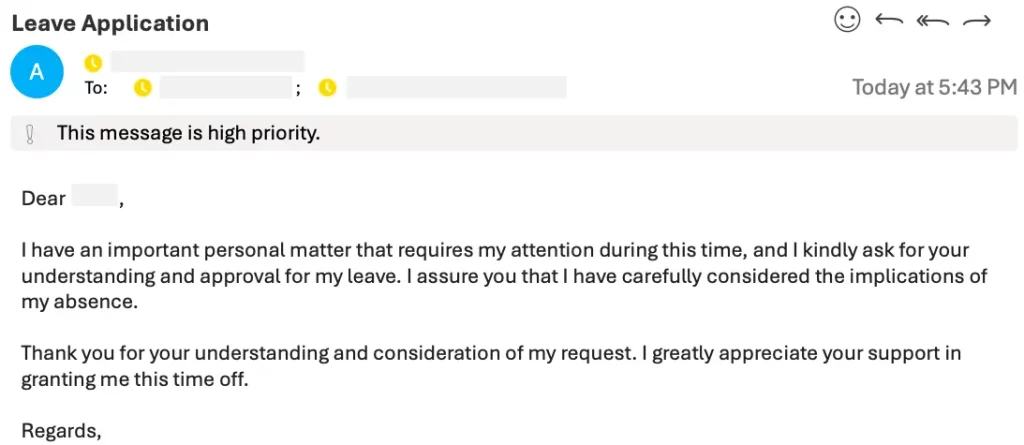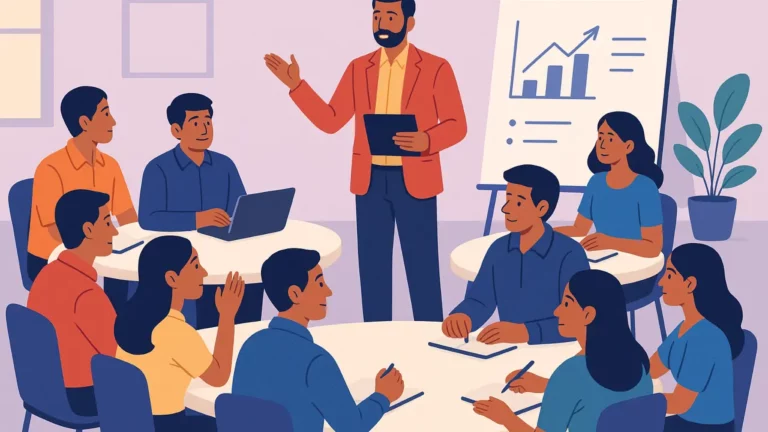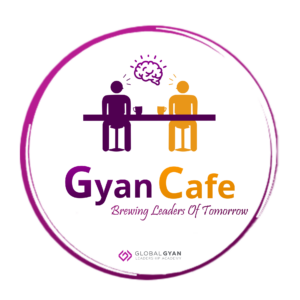How can Managers Moderate the Use of AI in Teams?


The global AI market is currently valued at over $136 billion and is projected to grow more than 13x in the next 7 years. Suffice it to say that AI is here to stay… and flourish. But to what extent? Let me give you an example.
A friend of mine runs a small company providing financial services to his clients. Recently, he sent me a snippet of an email that he received from one of his employees asking for leave:

Both of us didn’t know how to react to this email. Such overtly formal written language coming from a 22 odd year-old employee, who otherwise is very casual, is very jarring. It was obvious that the mail was generated using a Generative AI (Gen-AI) tool (most likely ChatGPT).
We sat down with the employee in question and reprimanded her. We explained to her that she did not have to resort to AI tools for a simple task such as requesting for a leave. However, what was even more interesting was that this employee had excellent written communication skills yet preferred relying on these tools than using her own abilities. When we asked her the reason for it, she said she was not sure if she would compose it correctly herself and felt it is better to have ChatGPT generate it for her.
This sparked a great conversation in our team, especially among the seniors, who have seen many a wave of transformation in our lifetimes. In organisations where the leadership team is in their forties have seen multiple disruptions in their careers:
- Through their early to mid-careers; they saw the computer and internet revolution; and the buzzword then was “Computerization”.
- Through their mid-careers; smartphones came along and changed the way we do things. The buzzword then was “Digital Transformation”, which went much beyond “Computerization”.
- Later part of their careers is going to be dominated by “AI”.
Just like we had to adapt to computerization and digital transformation earlier, we need to adapt to the AI-fication of the workforce today. And just like with computers and smartphones, we can either fear AI (that it will take away our jobs/we can’t use it efficiently) OR harness its energy to fuel growth and efficiency.
For managers, it is now a foregone conclusion that the Gen-Z employees will rely a lot on Generative AI tools for their tasks. If I had to use an analogy, I would relate this to how we lost the ability to do simple arithmetic with the advent of calculators or how we lost the ability to remember phone numbers after mobile phones.
Similarly, the younger workforce is surrendering basic skills such as research & writing to AI tools. As managers & leaders, we need to be cognizant of the following key issues when it comes to Generative AI tools:
- The younger workforce is very efficient in using these tools, but they are also frightened and confused by the emergence of these tools, because they are unsure of their careers going forward. They have spent years in attaining degrees and undergoing specialised training but are now told that their jobs could be easily replaced by AI tools.
- The younger workforce is used to quick results and generative AI tools help them achieve this easily.
- The younger workforce believes that they should not waste their efforts in something that can be done for them by tools and hence, do not see anything wrong with using these generative AI tools for routine tasks.
As managers, it is easy for us to fault them, but we need to go deeper than this and work out a solution.

Here is a list of few things that we can do to ensure our organisations benefit from Generative AI tools, as opposed to get dragged down by it:
- Create policies that discourage the younger workforce to use Generative AI tools for simple tasks that build skills and character. For example, writing emails, drafting proposals, etc.
- Learn to use anti-plagiarism tools to validate the work from the younger workforce to ensure it is not generated using Gen-AI and does not infringe on anyone’s copyright.
- Encourage the younger workforce to use AI tools in their research but institute mechanisms that ensure they have actually “understood” what they have gathered from the AI engines.
- Encourage the younger workforce to use AI tools to automate repetitive and boring tasks that will not only save time for them but will enable to organisation to do more with the same resources.
In summary, it is imperative for managers and leaders to accept that the workforce is going to use Gen-AI tools to assist in their work. They may not always know where to draw a boundary and it is our job to embrace the change as opposed to being fearful of it. We need to take the lead and ensure the workforce uses AI to their (and organisation’s) advantage. We will explore this more in upcoming articles.
This article is contributed by Dipesh Mohile, Consultant (Partnerships & Growth), GlobalGyan Leadership Academy.





